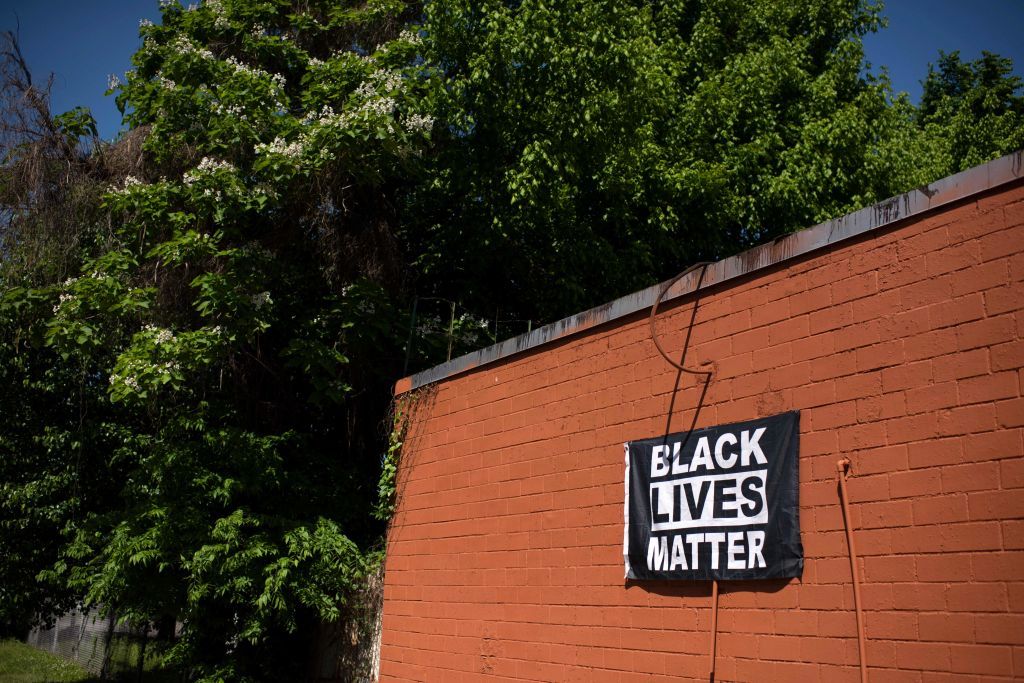
Source: MARK FELIX / Getty
Police officers are choosing violence on and off social media. Early Monday, the official Houston Police Department Twitter account celebrated several police officers involved in a 1917 race massacre.
It took nearly six hours before the Houston Police Department finally deleted the racist tweet. The account used the hashtag #NeverForget to commemorate several white officers leaving out the context of the Black men killed by police or resulting from police actions in 1917.
Four years before the Tulsa Race Massacre, Houston police instigated a standoff with Black soldiers responding in defense of the Black community. The centennial commemoration of Tulsa sparked discussion of other forgotten incidents. On the anniversary of Tulsa, University of Houston Professor Gerald Horne spoke with KHOU-11 about the Houston incident.
“The immediate trigger, however, was that a Black officer happened to spot a Houston police officer roughhousing and manhandling a Black woman,” Horne told the outlet. “He sought to intervene and was pistol-whipped.”
Weaving in various sources, including Prairie State University, Twitter user and content creator OLAASM, found the offending tweet and threaded a deep explanation of the 1917 massacre.
“Nineteen African American soldiers were executed and 63 received life sentences in federal prison. Two white officers faced court-martial, but they were released. No white civilians were brought to trial.” https://t.co/5LoEhLtFHE
— #ACAB (@OLAASM) August 23, 2021
The Zinn Education Project cited an entry from the NAACP’s Crisis Magazine in November 1917, which corroborates Hornes’ assessment of events. “The primary cause of the Houston riot was the habitual brutality of the white police officers of Houston in their treatment of colored people,” wrote The Crisis Magazine.
An account documented by the Paris, Texas NAACP revealed that a soldier had been beaten and arrested after trying to intervene on behalf of a Black woman being beaten and harassed by police. These police officers are presumably the same ones being memorialized by the Houston Police Department.
Responding to rumors, another Black officer had been killed and a white mob on the move, the soldiers with the 24th Infantry Regiment 3rd Battalion, marched on the local police station. The soldiers were met with force from police officers and a white civilian mob.
No white officer or civilian was ever held accountable for what transpired. In total 110 Black soldiers were found guilty across three courts-martial. Nineteen Black soldiers were hung, and 63 soldiers were given life sentences.
The Paris NAACP account also cites the Texas Historical Association as calling the 1917 incident “one of the saddest chapters in the history of American race relations.” The role of Black news media cannot be overlooked.
Like the documentation during the Tulsa massacre, reporting by Crisis Magazine helped document the events that led to the Houston incident. Black news media has been essential in documenting the incidents and attitudes toward Black men killed by police, and broader acts of violence against the Black community, in the past and the present.
But there is something to be said for a police department in a racially diverse community praising officers who contributed to and likely instigated a race massacre resulting in the deaths of dozens of Black soldiers. Social media is a forward-facing part of the communications department of any organization.
Social media has become the nerve center of communicating an organization’s values and priorities. In the case of a police department, it can also be a window into how that department views contemporary instances of Black men killed by police and other forms of brutality.
See Also:
If Black Media Doesn’t Tell The Truth About This Nation, It Won’t Be Told
New Documentary Exploring Tulsa Race Massacre Is A Testament To Black Self-Determination
[ione_media_gallery id=”4158822″ overlay=”true”]
window.addEventListener(‘interaction’, function () {
setTimeout(function () {
var s = document.createElement(‘script’), el = document.getElementsByTagName(‘script’)[ 0 ];
s.async = true;
s.src = ‘https://platform.twitter.com/widgets.js’;
el.parentNode.insertBefore(s, el);
}, 1000)
});
